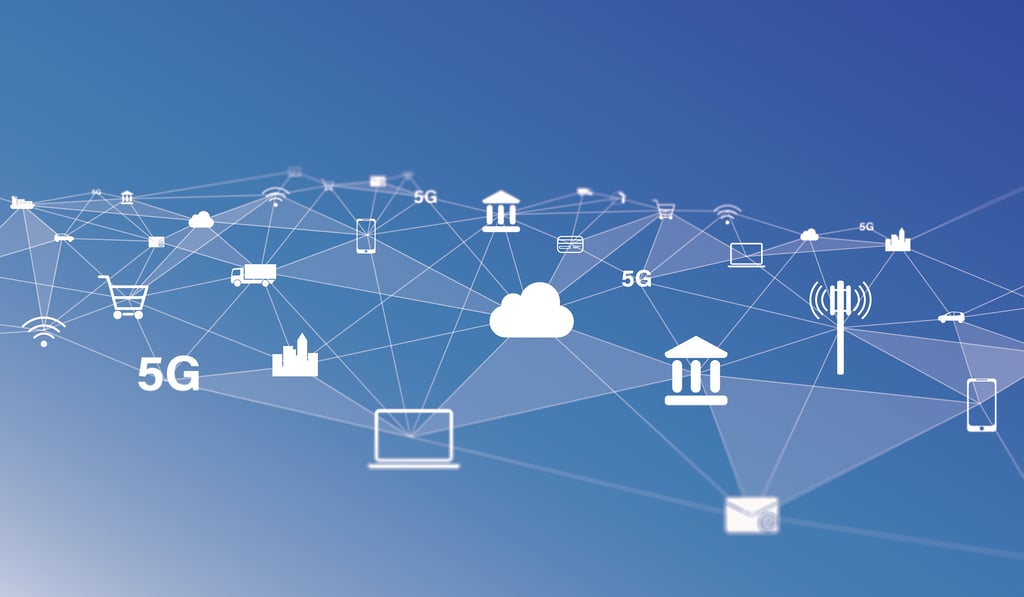

IT infrastructure
A growing number of organizations are either outsourcing their services or partnering with other organizations to scale and offer a greater variety of services. What this means is that remote locations are increasingly being utilized for service delivery. But what does that mean for overall enterprise security? Given that more and more workloads are also […]


A growing number of organizations are either outsourcing their services or partnering with other organizations to scale and offer a greater variety of services. What this means is that remote locations are increasingly being utilized for service delivery. But what does that mean for overall enterprise security?
Given that more and more workloads are also moving to remote locations, it’s up to organizations to be sure that these locations stay secure. That’s where edge computing security comes in. It protects the endpoints and any remote networks that might be vulnerable to attack by malware-infected devices or unauthorized users.
Also see: 7 Enterprise Networking Challenges
Edge computing security refers to securing enterprise data and devices (resources) that are no longer stored within the secure confines of a centralized data center. The term is typically used with 5G, Internet of Things (IoT), and fog/cloud computing.
Due to their distributed nature, edge systems can be difficult to manage with traditional tool sets such as antivirus software or firewall services. To help organizations combat this, some vendors offer specialized solutions designed for devices running on an edge network.
Also see: Best Network Management Solutions
Also see: Top Software Defined Networking Solutions
All companies have different needs and should choose the best vendor based on their use cases. The following list includes the top edge security vendors in the market today.
Symantec (also known as NortonLifeLock) is a subsidiary of Broadcom. The company offers cybersecurity software and services to individuals and businesses using a data-centric SASE approach that improves network and security services while reducing complexity and boosting security. The system provides endpoint protection, network protection, and data protection. They also offer cyber threat analysis and cyber defense services.
Prisma Access is Palo Alto Networks’s edge security platform that claims to “protect the hybrid workforce with the superior security of ZTNA 2.0 (zero trust network access) while providing exceptional user experiences from a simple, unified security product.” It integrates best-in-class threat prevention and device management capabilities for a complete, end-to-end solution for data protection at the network edge.
The platform firewall as a service (FWaaS), cloud access security broker (CASB), cloud secure web gateway (SWG), and autonomous digital experience management (ADEM) security service secures the endpoint, network, and data with multiple levels of protection.
One of the most prominent edge security solutions on the market is Akamai. The Akamai Cloud Delivery Platform offers services enabling businesses to secure their data anytime.
They also provide security solutions for enterprise clouds, apps, APIs (application programming interfaces), and users. In addition, Akamai intelligent edge platform uses artificial intelligence (AI) to identify potential risks, vulnerabilities, and threats before they occur.
Cisco is an IT and networking company specializing in switches, routers, cybersecurity, and IoT. Cisco offers a suite of products that protect the on-premises, remote, or hybrid workforce.
For example, the Cisco Umbrella solution uses its SASE architecture to protect data and enforce policies across applications, devices, users and groups. It also offers security intelligence operations (SIO) — an advanced security infrastructure that provides threat identification, analysis, and mitigation.
In addition, Cisco’s Stealthwatch Cloud provides continuous visibility into an organization’s environment, so security teams can detect problems before they become costly breaches.
Barracuda Networks is a cloud and network security platform provider. It offers data protection, threat prevention, and application security for over 200,000 organizations worldwide. In addition to its traditional products, it also provides cloud-delivered, hybrid, and on-premises solutions.
Barracuda Networks offers a cloud-native SASE platform, which controls data access from any device, regardless of location, and enforces security policies in the cloud, at the branch, or on the device. In addition, the platform combines FWaaS, SD-WAN, ZTNA, and SWG as key features, enabling businesses to buy fewer purpose-built solutions.
Zscaler is a leading provider of cloud-based cyber security for businesses. Its Zero Trust Exchange is a “cloud native SASE platform built for performance and scalability.” It is designed to protect against today’s constantly evolving attacks by leveraging the power of intelligent automation and machine learning, threat intelligence, and analytics.
The platform secures edge across over 150 data centers and detects over 150 million threats daily. It also processes about 200 billion transactions daily at peak periods. In addition to leveraging machine learning algorithms, it provides complete visibility across all data and systems to reduce risk exposure and detect advanced threats.
Bitglass merged with Forcepoint, a cybersecurity company, and created a product called Forcepoint ONE. Forcepoint ONE integrates a secure web gateway, cloud access security broker, zero-trust network access, secure access service edge and security service edge to form one unified platform for enterprise endpoints and networks. This platform allows businesses to centralize management for all user-generated data in the cloud or on-premises.
Check Point Software Technologies is an Israeli-based company. It offers a range of security solutions for enterprise, government, and small-business customers. Harmony Connects is Check Point’s SASE solution; it provides zero-trust access control, SWG, CASB, and FWaaS to protect users and branch offices with enhanced threat prevention and data security.
VMware is best known for its multicloud services for all apps and virtualization technology. However, the vendor is now a key player in the SASE industry due to its SD-WAN by VeloCloud platform, which allows enterprises to securely connect their sites with an intelligent, cloud-based edge solution.
The company’s SASE solution merges cloud networking and security into one simplified service that helps organizations get ahead of threats without additional complexity.
Cato Networks is a dominant player in the SASE industry. It combines SD-WAN with network security to provide a cloud-native service. Cato claims it’s “delivering the world’s first SASE platform, through a globally distributed cloud service that provides enterprise network and security capabilities to all edges.”
Cato Cloud offers a global SD-WAN architecture with security services such as firewall as a service, security policy gateway, anti-malware, intrusion prevention system, and threat detection for both edge and data center deployments.
Secure access service edge is a cybersecurity term coined by Gartner in 2019 to describe a service that provides authentication and authorization for connections between a user and an organization’s applications.
SASE features several security services such as SD-WAN, CASB, NGFW and FWaaS, ZTNA, and SWG. It operates at the network’s edge and controls external devices’ access to applications or data.
SASE is so important today because companies can use it to manage access to specific applications or groups of users. It also makes enforcing security policies like data retention and deletion rules easier.
Edge security solutions protect company trade secrets, customer data, and intellectual property by monitoring network traffic as it enters and leaves its corporate network. Effective products must have the following features.
System visibility is critical to provide an effective edge security solution. The capability to monitor internet traffic inside the enterprise perimeter provides a complete view of potential threats. A good solution will include built-in visibility into endpoints connected via wired or wireless connections. It should also be able to identify potential threats based on predefined policies automatically.
An edge security solution should not only detect potential vulnerabilities but act upon them when they arise. Relying solely on signatures can often result in false positives and incomplete coverage of the latest threats. To ensure maximum efficacy, look for a product with intelligence that identifies malicious behavior before it happens.
Protecting sensitive corporate data while allowing essential business functions to flow through the enterprise is one of the most challenging aspects of edge security solutions. Implementing hardening measures such as application whitelisting, user access control, encryption, and firewalls ensures there are no backdoors that would allow attackers access to sensitive information.
Enterprises must secure all ingress and egress points to their network against intruders. Products with secure web gateways will typically include hardened firewalls to protect data, intrusion prevention devices to prevent intrusion attempts, SSL termination devices to prevent unauthorized access from outside networks, and proxy servers that can filter content coming from the internet.
Ensuring private data stays private during its transfer over public networks requires additional effort on top of securing entry points. One way to do this is through encryption, where all transferred data is encrypted using the sender’s secret key and decrypted by the receiver’s corresponding public key. It’s recommended to select a product with strong encryption algorithms like 256-bit AES, DHE/ECDHE, or RSA 2048.
An edge security solution that cannot check updates and available patches could open a network to critical threats. Check to see if the product has a robust patch management process that automates notifications of new patches and delivers appropriate fixes, along with the ability to conduct scheduled network scans.
There are many benefits to an edge security solution. Edge security solutions secure a company’s data as it moves between on-premises devices and cloud-based applications by identifying, authenticating, encrypting, and enforcing application access controls against unauthorized users.
With an edge security solution, enterprises can protect their business assets and take the necessary steps to secure them from online threats. These solutions work with network perimeters to inspect content entering or leaving an organization’s perimeter, protecting against malware through email or other channels.
Edge solutions integrate with CASB, ZTNA, SWG, and FWaaS to detect malware and provide analytics on suspicious behavior patterns and alerts when a threat is detected. It also protects mobile devices by scanning apps before installation and verifying that all data traffic is encrypted.
There is much to consider when deciding if and how to implement an edge security solution, including size, budget, resources available for implementation, risk assessment, and regulatory requirements.
Many edge security solutions’ attractive capabilities include scalability, centralized management, integration with existing IT infrastructures, and integrations with other enterprise-wide systems such as SIEMs.
When selecting vendors, it’s important to find one with all or most of the features your company needs, so it likely be necessary to shop around do extensive research.


Aminu Abdullahi is an experienced B2B technology and finance writer and award-winning public speaker. He is the co-author of the e-book, The Ultimate Creativity Playbook, and has written for various publications, including eWEEK, Enterprise Networking Planet, Tech Republic, eSecurity Planet, CIO Insight, Enterprise Storage Forum, IT Business Edge, Webopedia, Software Pundit, and Geekflare.

Enterprise Networking Planet aims to educate and assist IT administrators in building strong network infrastructures for their enterprise companies. Enterprise Networking Planet contributors write about relevant and useful topics on the cutting edge of enterprise networking based on years of personal experience in the field.
Property of TechnologyAdvice. © 2025 TechnologyAdvice. All Rights Reserved
Advertiser Disclosure: Some of the products that appear on this site are from companies from which TechnologyAdvice receives compensation. This compensation may impact how and where products appear on this site including, for example, the order in which they appear. TechnologyAdvice does not include all companies or all types of products available in the marketplace.